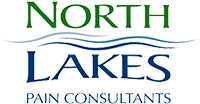Common Treatments for RSD/CRPS
Common Treatments for RSD/CRPS
Common Treatments for RSD/CRPS
Reflex Sympathetic Dystrophy (RSD), also known as Complex Regional Pain Syndrome (CRPS), is a health condition that causes severe, lasting, debilitating pain. It is thought to be an autoimmune condition. Common symptoms include severe and constant pain, swelling, inflammation, changes in skin temperature, hypersensitivity, bone loss, and skin discoloration. The symptoms usually begin in a leg or an arm, but the syndrome can be progressive, and in extreme cases, impact the internal organs. There is no known cure for RSD/CRPS. For some, however, remission is possible.
RSD/CRPS Types
CRPS is divided into two groups. The types of injuries that can cause this are wide-ranging, from a simple sprain to a burn injury, or amputation. According to medicalnewstoday.com, Type 1 can be caused by a minor injury, with no confirmed nerve damage. Type 2 is caused by an injury directly to the affected nerve that shows confirmed nerve damage.
Treatments For RSD/CRPS
As reported by the Mayo Clinic, there is evidence that early treatment might help improve symptoms of RSD/CRPS. The treatments available for sufferers of RSD/CRPS vary widely and tend to work best when multiple options are used in combination with each other. Several treatment options are listed below:
Medication
- Over-the-counter medications such as ibuprofen, aspirin, and naproxen sodium may help to alleviate mild pain and inflammation. Your doctor may decide to prescribe stronger pain relievers if they feel it is necessary.
- Corticosteroid medications may be prescribed to help reduce inflammation, allowing for improved mobility in the affected area.
- Anticonvulsant and antidepressant medications are sometimes used to treat neuropathic pain, such as amitriptyline or gabapentin.
- Sympathetic nerve block medication is an anesthetic that may be injected with the purpose of blocking pain fibers in the affected nerves, which may help relieve pain in some patients.
- Bone-loss medications are sometimes prescribed in order to prevent or stall bone loss.
- Intrathecal medication pumps, which deliver the prescribed pain medication directly to the spinal cord fluid.
- Topical analgesics are used that may reduce dermal hypersensitivities, such as lidocaine patches or cream.
- Intravenous ketamine, which is a strong anesthetic, has been shown in some studies to substantially alleviate pain.
Therapies
- Physical and/or occupational therapy may help to retain or regain coordination and a range of movement. It can also help prevent loss of muscle mass and improve blood flow to the affected extremity.
- Transcutaneous electrical nerve stimulation, also called a TENS unit, applies small electrical impulses to nerve endings, sometimes helping to ease chronic pain.
- Mirror therapy uses a mirror to try to help retrain the brain, reflecting the healthy limb so the brain perceives it as the injured limb.
- Heat therapy applies heat to the affected area, to help relieve swelling and provide comfort to skin that may be too cool.
- Acupuncture is the insertion of long, thin needles that may help stimulate nerves, muscles, and connective tissues to relieve pain and help increase blood flow.
There are multiple options and combinations of treatments that may work to help you or your loved one live more comfortably with RSD/CRPS, or possibly even achieve remission. Please call us or fill out the form below discuss how we can help!
